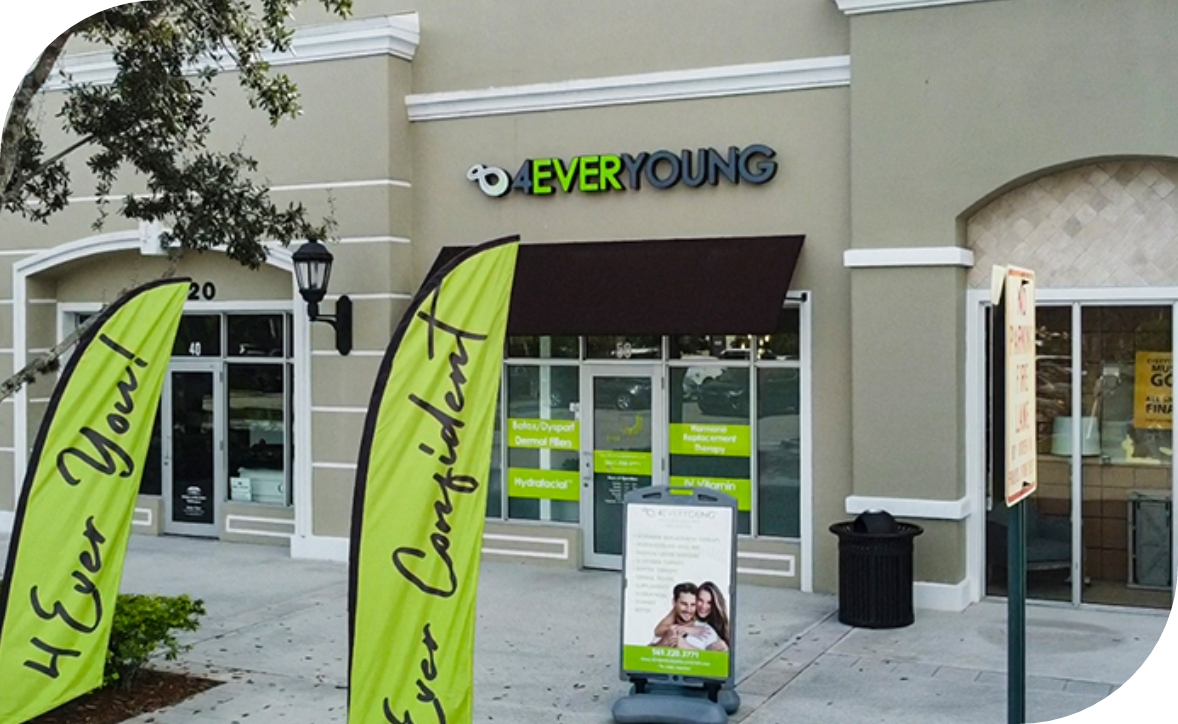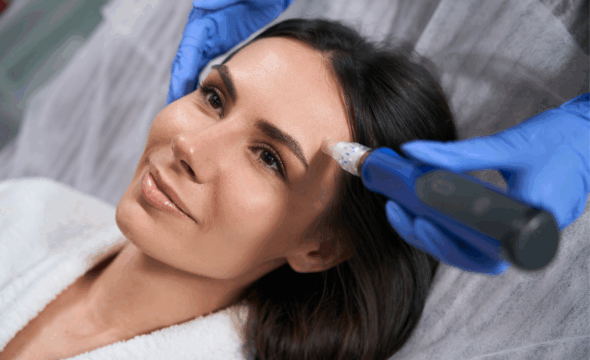Microneedling Safety and Side Effects: What You Need to Know
Microneedling is becoming a popular option for individuals seeking to enhance their skin without undergoing invasive surgery. However, like any cosmetic procedure, understanding the safety aspects is crucial. When you know what to expect and how to prepare, you reduce the risk of unwanted side effects and make more informed decisions about your skincare. Whether you’re trying to reduce wrinkles, improve skin texture, or lighten scars, understanding microneedling safety provides you with peace of mind. Being aware of how the process works and what’s involved helps ensure better results. This is especially important for those new to gentle skin needling or unsure about what the treatment entails.
Common Microneedling Side Effects and What to Expect
Normal Reactions
It’s completely normal to see some temporary changes in your skin after a microneedling med spa session. You may notice redness and a bit of swelling, similar to a mild sunburn. This happens because the skin has been punctured in many tiny spots, which triggers the body’s natural healing response. You may also feel a sandpaper-like texture for a few days as your skin starts to renew itself. These effects are usually mild and part of the natural microneedling healing process, especially after your first few treatments.
Pinpoint Bleeding and Mild Edema
Tiny spots of bleeding can occur during microneedling. This is expected and happens when the needles penetrate into the dermis. It’s not a cause for alarm and typically stops quickly. Another short-term effect is mild edema, or puffiness, which may be seen around the treated area. This puffiness results from your skin’s inflammatory response and is part of how your body repairs itself. The presence of mild swelling and light bleeding means the procedure is working as intended. These signs usually fade within a day or two and are commonly observed with professional microneedling treatments.
Duration and Management
The length of time it takes for the skin to return to normal varies, but most people experience only a short recovery period. The visible effects last between 24 and 72 hours, though sensitivity may continue for a few days. During this microneedling downtime, following proper microneedling aftercare tips can significantly accelerate recovery. Hydrating the skin, avoiding harsh products, and keeping the face clean are essential steps in the healing process. Using cool compresses and avoiding heat or workouts helps reduce inflammation. Being gentle with your skin reduces the chance of complications.
When to Seek Medical Advice
While most reactions to microneedling are minor, certain symptoms should not be ignored. If you experience intense pain, pus, excessive swelling, or prolonged redness that persists for more than a few days, it may indicate an infection or allergic reaction. Contact a healthcare provider if your skin feels hot to the touch or develops unusual bumps. These are not typical responses and may need treatment. It’s especially important for those undergoing microneedling for sensitive skin to watch for adverse effects. Responding quickly to warning signs helps prevent more serious issues.
Special Considerations for Sensitive Skin
Adapting Needle Depth and Device Speed
Microneedling can still be effective for individuals with reactive or sensitive skin, but adjustments are necessary to minimize excessive irritation. One of the most important safety steps is customizing needle depth and speed settings to fit the needs of sensitive skin. Lower depths reduce the chance of injury while still encouraging collagen production. Slower speeds help limit the skin’s stress response, making the procedure more tolerable. Trained microneedling practitioners understand how to tailor these variables safely. A careful approach ensures the benefits of the treatment are delivered without triggering unwanted side effects.
Barrier-Repairing Serums
These serums are specially formulated with ingredients like ceramides, peptides, or panthenol that help rebuild the skin’s natural defense system. They create a soothing layer over microchannels created by the needling process, which prevents moisture loss and guards against irritants. Applying these formulas immediately after the procedure supports healing and reduces the risk of prolonged dryness.
Best Practices for Sensitive Skin Types Post-Needling
Caring for sensitive skin after microneedling requires extra vigilance to ensure comfort. The following practices are designed to protect your skin:
- Alcohol-Free Cleansing: The first step in caring for sensitive skin post-needling is choosing a cleanser that won’t strip or inflame. Avoid any product with alcohol or sulfates, as these can be particularly harsh when your skin is compromised. Instead, opt for a pH-balanced cleanser formulated for sensitive or post-procedure skin. Ingredients like aloe vera, oat extract, or calendula can provide a soothing effect while effectively removing sweat or residual skincare. Only cleanse with lukewarm water and pat gently with a soft, clean towel. Limit cleansing to once or twice a day in the first few days to prevent over-washing.
- Hydration Support: Moisture loss is a common side effect of microneedling. Using a calming serum with hyaluronic acid can help replenish hydration while reducing tightness and discomfort. Look for products free of preservatives like phenoxyethanol or essential oils, which may trigger reactions. A serum with panthenol (vitamin B5) or centella asiatica can provide added soothing benefits. Apply while the skin is still slightly damp to lock in moisture. Be sure to layer with a basic, non-comedogenic moisturizer that reinforces the skin’s barrier. The goal is to maintain a moist environment that supports healing without suffocating or overstimulating the skin.
- Strict Sun Avoidance: Sun exposure poses a major risk to sensitive, post-needling skin, which is more prone to pigmentation and inflammation. Staying indoors for the first 48–72 hours is ideal, but if you must go outside, wear a wide-brimmed hat and apply a mineral sunscreen with zinc oxide or titanium dioxide. These ingredients provide a physical barrier that reflects UV rays without relying on potentially irritating chemical filters. Choose a formulation specifically made for sensitive skin. Apply sunscreen every morning and reapply it if you are exposed to sunlight. UV protection is a non-negotiable part of the post-care process. Being consistent with sun protection ensures that healing progresses without interruption or damage.
- Eliminating Potent Actives: Steer clear of any active ingredients known to provoke sensitivity. This includes vitamin C serums, alpha-hydroxy acids (AHAs), beta-hydroxy acids (BHAs), and retinoids. Even products with natural acids or exfoliants should be paused for a minimum of five days, or longer if irritation persists. These actives can overwhelm sensitive skin that’s already trying to recover. Instead, stick to non-reactive skincare that focuses on comfort and moisture. After the skin has fully calmed and the barrier is re-established, you can gradually reintroduce actives with guidance from your skincare provider.
With a gentle post-care strategy, you can minimize discomfort and achieve radiant results. Prioritizing soothing products and adequate sun protection will help your skin recover more confidently after treatment.
How to Determine Skin Suitability
Patch testing helps identify potential reactions to numbing agents or post-treatment products. A small amount of the product is applied to the skin, usually behind the ear or on the inner arm, and monitored for signs of redness, swelling, or discomfort. Doing this in advance gives both the client and practitioner confidence in moving forward with treatment. It’s an essential step in customizing post-microneedling care to match individual skin profiles.
Microneedling Devices and Safety Standards
Professional Pens vs. At-Home Dermarollers
Microneedling tools vary widely in quality and safety, especially when comparing professional devices with at-home options. In clinics, mechanical pens are often used because they deliver precise, controlled punctures that adjust to the skin’s depth and condition. These advanced tools provide enhanced safety and effectiveness, particularly in treating complex skin concerns. On the other hand, home-use dermarollers are typically more basic and rely on manual pressure, which increases the risk of uneven penetration and skin trauma. Although at-home tools are more affordable, they lack the customization and sterility of professional-grade devices. For those considering skin needling options, professional care usually yields more reliable outcomes.
Sterilization Protocols
One of the most important safety elements in microneedling is the proper cleaning and management of the tools between uses. Below are fundamental practices that form the backbone of a safe microneedling protocol:
- Single-Use, Sealed Needle Cartridges: Each cartridge should be pre-sterilized and opened in front of the client to establish transparency. Even if a cartridge appears unused, it should never be reused between sessions or clients. Reusing needles can transfer bloodborne pathogens or skin debris from one person to another.
- Disinfecting Surfaces: Before and after every procedure, it’s crucial to sanitize all treatment surfaces using EPA-registered disinfectants thoroughly. Sanitization should go beyond a quick wipe. Allow enough contact time for the disinfectant to work effectively, as indicated on the product label. Even seemingly minor areas should be cleaned, especially in multi-use rooms. Practitioners should also avoid clutter in their workspace, as crowded surfaces make it harder to sanitize thoroughly.
- Sterilizing Reusable Tools Between Sessions: While some components of a microneedling setup are disposable, others are not. These non-disposable items must undergo high-level disinfection between clients. This often involves using hospital-grade sterilants or soaking in approved disinfectant solutions for the recommended duration. If the device is designed to be autoclavable, it should be sterilized using a steam autoclave at the appropriate temperature and pressure settings. Storing clean tools in sterile pouches until their subsequent use ensures they remain uncontaminated. Labeling tools with sterilization dates also supports accountability in professional settings.
- Glove Usage and Hygiene During Procedures: Gloves act as a first-line defense between the practitioner’s hands and the client’s skin. Medical-grade latex gloves should be worn throughout the microneedling process. Hands should be washed thoroughly before putting gloves on and again after removing them. If a practitioner touches anything non-sterile (like a phone, drawer handle, or spray bottle), gloves must be changed immediately to prevent cross-contamination. Also, wearing gloves reduces the risk of transferring microorganisms from practitioner to client and vice versa, especially when handling blood-prone areas. Practitioners should also avoid wearing jewelry or having long nails, as these can harbor bacteria even under gloves.
- Proper Disposal of Used Needle Cartridges: After each session, used needle cartridges should be treated as biohazardous waste. These should never be thrown into a regular trash bin. Instead, they must be placed into a designated sharps container. This prevents accidental injury and contamination of the workspace. Once full, sharps containers should be disposed of through certified medical waste management services.
Attention to sterilization protocols is fundamental. By committing to such methods, providers create a trustworthy experience.
Safety Considerations
At-home microneedling kits may appear convenient, but they come with notable safety concerns. Without formal training, it’s easy to use too much pressure or contaminate equipment. Most home users lack knowledge of facial anatomy, which increases the risk of injury. While at-home devices seem budget-friendly, the potential for harm often outweighs the savings. Anyone entertaining dermarolling treatment at home should carefully weigh the risks and consider a professional alternative for best results.
Cost Factors and Treatment Planning
Price Influencers
The cost of microneedling can vary significantly, depending on several key factors. One major component is location, with larger cities or high-end areas often coming with higher pricing due to overhead and demand. Additionally, the skill and background of the provider can significantly impact the final bill. Highly experienced professionals with strong reputations often charge more, reflecting their expertise and the consistent results they deliver. Add-on services may also increase the total. Understanding these elements helps clients evaluate the microneedling cost in context.
Bundle Deals and Maintenance Session Schedules
Instead of paying per session, clients can purchase bundles that include several appointments at a reduced rate. This not only lowers the average cost but also ensures a consistent treatment schedule. Regular sessions support ongoing improvement, particularly for concerns such as scars or uneven texture. Maintenance schedules are often tailored to individual responses and goals, providing flexibility while keeping skin progress on track. Choosing a bundle helps align financial planning with skin transformation, making it easier to maintain the results of anti-aging skin procedures over time.
Balancing Budget With Safety and Skin Health Goals
Selecting a provider solely based on affordability may result in compromised care or unsatisfactory outcomes. A balanced approach includes researching the provider’s qualifications and reviewing before-and-after results. Fewer high-quality sessions can be more effective than many low-cost alternatives. Focusing on long-term results instead of short-term savings helps maintain skin integrity and health. Thoughtful planning ensures your investment in facial rejuvenation techniques delivers value and visible change.
Achieving noticeable improvements through microneedling starts with making informed choices based on research, skin type, and treatment goals. Evaluating options carefully leads to more personalized results. For anyone considering anti-aging facial treatments, microneedling presents a versatile and effective option when performed responsibly. Skin rejuvenation can be rewarding, supporting lasting confidence and healthy skin.







